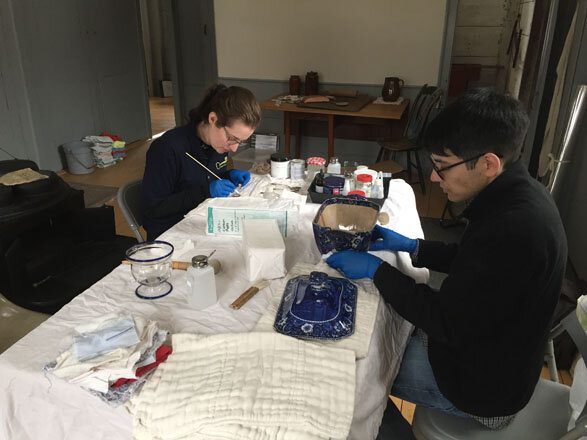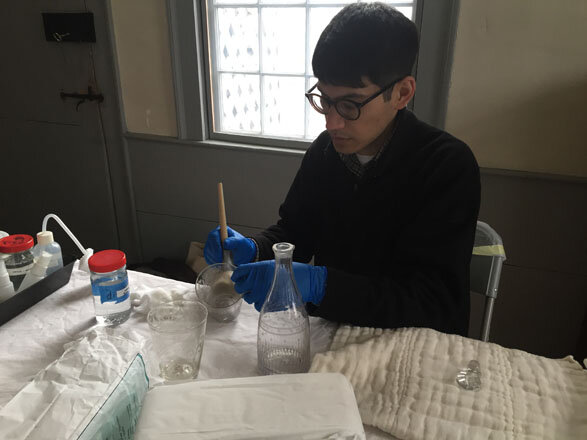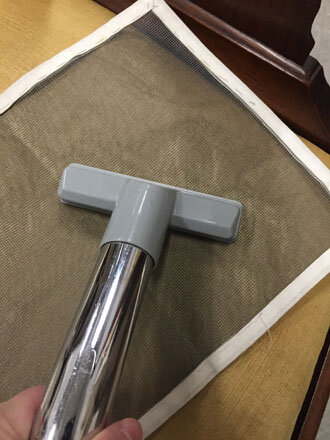
By Kate Kearns
Collections Manager
Historic Deerfield’s regular season runs from mid-April through November. While our historic houses are presently closed to the public, all is not quiet in Deerfield. My colleagues and I have not fled the New England winter for a tropical vacation, as appealing as that may sound! On the contrary, in some respects, winter is our busiest time of year. It’s our opportunity to tackle the projects that can’t be done when we are open for daily tours.
One such project is intensive house cleaning. Each winter we typically select two houses for in-depth cleaning, beyond the vacuuming and dusting they receive throughout the open season. Our entire Curatorial Department staff spends the better part of a week in a house, cleaning the whole building and its contents from top to bottom. This year we tackled Ashley House and Williams House.
This deep cleaning is an essential part of the museum’s preventive conservation protocol. Light, pollutants, insects, vibrations, and temperature and humidity fluctuations all have the potential to cause damage to collection objects. Getting into the dark corners, underneath the furniture, and inside the cupboards helps us keep pests at bay and identify problems that could otherwise go unnoticed.

As part of this process, each object in the house is carefully inspected by a curator to assess its condition. Examining each object individually, we make determinations as to the safest method to clean the object. If an object is particularly fragile or unstable, we may decide it’s best to leave it alone, or to take it to a professional conservator for treatment.
Cleaning museum collections in an historic house is a bit different from cleaning your own home. We take a very conservative, less-is-more approach. We generally do not use harsh commercial cleaning products that could potentially damage surfaces or leave unwanted residues behind. Instead, we use a few basic solvents and gentle tools such as soft bristle brushes and cotton swabs.

When cleaning ceramics, glass, and metals, we always start by gently brushing the surface with a clean, soft brush to remove dust and debris. Sometimes this is all that’s needed, but if a layer of grime or tarnish has accumulated on the surface, we may go a step further. If it is safe to do so, cotton pads or swabs moistened with an appropriate solvent can be used to clean objects.
When it comes to furniture and other wooden objects, a gentle dusting with a soft brush or microfiber cloth is usually all that is necessary. We do not use any kind of furniture polish or wood cleaners, as they can potentially damage surfaces or leave behind residue.

Dust also accumulates on textiles, including upholstery fabrics, rugs, window coverings, and bedding. Over time, dust can become embedded in textile fibers, causing discoloration. It can also be a food source for insects. Textiles that are in good condition can be vacuumed to remove dust and debris, as well as insects and their eggs. We use a variable suction vacuum cleaner on its lowest setting to gently clean textiles. A piece of fine mesh is placed over the textile to prevent any loose fibers from being sucked up by the vacuum.
While it may not be the most glamorous task, intensive house cleaning has become a project that I look forward to each winter. It’s a welcome change of pace, a chance to slow down a bit and devote a whole week to doing what I love most, spending quality time with Historic Deerfield’s collection.